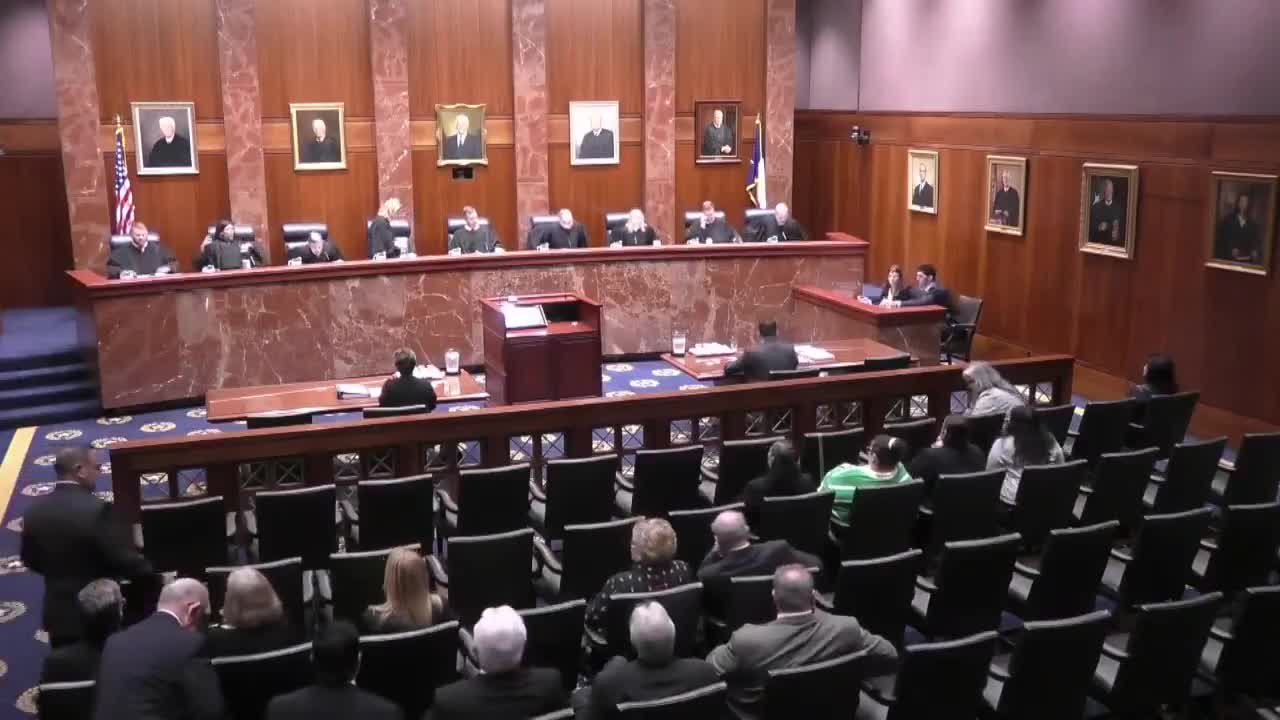Texas Supreme Court considers whether taxpayers have standing to challenge South Texas ISD’s special tax
November 06, 2025 | Supreme Court of Texas, Judicial, Texas
This article was created by AI summarizing key points discussed. AI makes mistakes, so for full details and context, please refer to the video of the full meeting. Please report any errors so we can fix them. Report an error »

The Supreme Court of Texas heard argument in Busey v. South Texas Independent School District over whether individual taxpayers in Willesee County have standing to challenge the district’s imposition of an ad valorem tax that petitioners say was authorized by a 1974 special election for a rehabilitation program serving disabled persons.
Petitioners told the court the 1974 election order authorized a narrow 5¢ per $100 tax for operating a rehabilitation district to serve disabled trainees and to construct facilities for that purpose. Petitioners argued the school district has since expanded into a comprehensive academic program and enrichment operations that, petitioners contend, depart from the purpose approved by voters. Counsel cited record figures and testimony presented below: an enrollment share of less than 3 percent students with disabilities (compared with a cited statewide or comparative rate of roughly 10–11 percent) and a cited 2019 local cost per pupil figure of about $62,500 for students sent to South Texas ISD versus approximately $5,000 per pupil funded locally. Petitioners framed the relief at this stage as a challenge to the authority to assess or collect the tax unless and until the voters approve it for the district’s current functions.
Respondent South Texas ISD urged the court to reject taxpayer standing here. Respondent’s counsel argued the record shows a 1974 election and that the statutory scheme and enabling legislation give the district broad powers to levy taxes and provide facilities and programs. Respondent asserted petitioners mixed illegal‑collection and illegal‑expenditure theories and urged the court to require petitioners to fit strictly within the state’s recognized taxpayer‑standing doctrine. Counsel also warned about disruption and reliance interests, argued political remedies exist (board action or legislative amendment), and pointed to statutory language in chapter 26 and related enabling provisions that, respondent said, authorize broad taxing and facility powers for South Texas ISD.
Justices questioned both sides about the proper standing framework and about the contours of the alleged injury. They pressed petitioners on whether the case should be treated as a classic illegal‑collection claim (tax collected without voter approval) or as an illegal‑expenditure claim (tax expended for unauthorized purposes), and they explored remedial possibilities if petitioners ultimately prevail (county‑wide injunctions versus relief limited to the named taxpayers). The court also discussed whether the legislature’s design for the special district — including appointment and election of board members and statutory funding mechanisms — limited or preserved judicial relief.
No decision was announced from the bench. Argument focused on the standing question; counsel and justices repeatedly emphasized the narrow threshold inquiry and the potential broader consequences for taxation and public financing if taxpayer standing were readily found.
Petitioners told the court the 1974 election order authorized a narrow 5¢ per $100 tax for operating a rehabilitation district to serve disabled trainees and to construct facilities for that purpose. Petitioners argued the school district has since expanded into a comprehensive academic program and enrichment operations that, petitioners contend, depart from the purpose approved by voters. Counsel cited record figures and testimony presented below: an enrollment share of less than 3 percent students with disabilities (compared with a cited statewide or comparative rate of roughly 10–11 percent) and a cited 2019 local cost per pupil figure of about $62,500 for students sent to South Texas ISD versus approximately $5,000 per pupil funded locally. Petitioners framed the relief at this stage as a challenge to the authority to assess or collect the tax unless and until the voters approve it for the district’s current functions.
Respondent South Texas ISD urged the court to reject taxpayer standing here. Respondent’s counsel argued the record shows a 1974 election and that the statutory scheme and enabling legislation give the district broad powers to levy taxes and provide facilities and programs. Respondent asserted petitioners mixed illegal‑collection and illegal‑expenditure theories and urged the court to require petitioners to fit strictly within the state’s recognized taxpayer‑standing doctrine. Counsel also warned about disruption and reliance interests, argued political remedies exist (board action or legislative amendment), and pointed to statutory language in chapter 26 and related enabling provisions that, respondent said, authorize broad taxing and facility powers for South Texas ISD.
Justices questioned both sides about the proper standing framework and about the contours of the alleged injury. They pressed petitioners on whether the case should be treated as a classic illegal‑collection claim (tax collected without voter approval) or as an illegal‑expenditure claim (tax expended for unauthorized purposes), and they explored remedial possibilities if petitioners ultimately prevail (county‑wide injunctions versus relief limited to the named taxpayers). The court also discussed whether the legislature’s design for the special district — including appointment and election of board members and statutory funding mechanisms — limited or preserved judicial relief.
No decision was announced from the bench. Argument focused on the standing question; counsel and justices repeatedly emphasized the narrow threshold inquiry and the potential broader consequences for taxation and public financing if taxpayer standing were readily found.
Don't Miss a Word: See the Full Meeting!
Go beyond summaries. Unlock every video, transcript, and key insight with a Founder Membership.
✓
Get instant access to full meeting videos
✓
Search and clip any phrase from complete transcripts
✓
Receive AI-powered summaries & custom alerts
✓
Enjoy lifetime, unrestricted access to government data
30-day money-back guarantee

